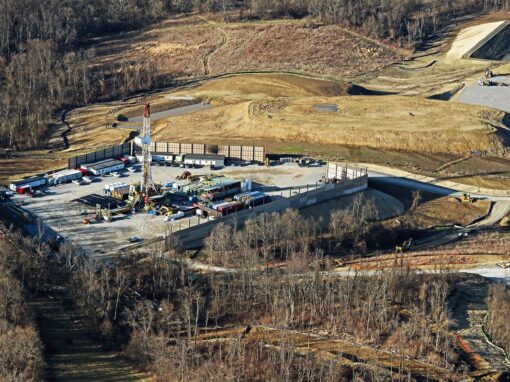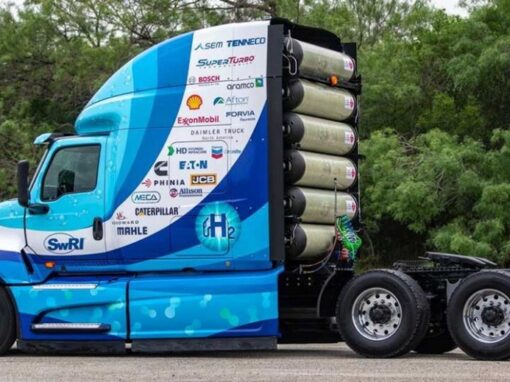On August 16, 2022, with the stroke of a pen, the nation catapulted ahead in the global race to lead the clean energy transition with the signing of the Inflation Reduction Act (IRA). The IRA is one of the most significant actions Congress has taken to foster and support the deployment of clean energy technologies in the U.S. to not only meet our critical decarbonization goals, but also stimulate investment and expansion of domestic manufacturing, job creation, and economic development. On the first anniversary since its passage, we are already seeing tremendous movement to fulfill the intent of the IRA and assure U.S. leadership in the global drive to decarbonize.
As the national association representing the full spectrum of the industry, the Fuel Cell & Hydrogen Energy Association (FCHEA) has long been working in Washington, DC and around the country to ensure hydrogen and fuel cell technologies receive necessary policy support, funding, tax parity, regulations, and stakeholder outreach to succeed. Our efforts working with the bipartisan Hydrogen & Fuel Cell Caucus members in the U.S. House and Senate produced tremendous results with the recent focus on hydrogen and its economic and environmental benefits from Capitol Hill.
The IRA was a strategic complement to the Infrastructure Investment and Jobs Act (IIJA), which was signed into law in November of 2022 and provided $9.5 billion to support a range of clean hydrogen programs including the Regional Clean Hydrogen Hubs program (H2Hubs). To bolster these substantial investments in large-scale production and utilization networks, the IRA included a range of key tax incentives, most notably a new Clean Hydrogen Production Credit that will provide up to $3 per kilogram for the production of clean hydrogen. The IRA also included credits for fuel cell vehicles, hydrogen infrastructure, energy storage, and manufacturing improvements.
Energy and financial analysts are predicting that these policies and programs will stimulate major public and private investment across the U.S. and over the past twelve months since the IRA became law, we have seen significant actions from FCHEA members and others to bolster that case.
This includes greatly expanding the industry’s footprint with announcements for new construction of or expanding existing hydrogen production and manufacturing facilities for electrolyzers, fuel cells, and components; large-scale energy storage projects; and fuel cell bus, truck, and stationary power deployments. Strategic partnerships, supply or off-take agreements, and key financial investments and commitments totaling tens of billions of dollars have been announced from the private sector. In addition to hydrogen production facilities, several large-scale ammonia and sustainable aviation fuel (SAF) facilities that will utilize hydrogen, were also announced. These activities and projects are underway in more than 40 states, and all are separate from the U.S. Department of Energy’s (DOE) Hydrogen Hub proposal submissions, which brought together public and private sector partnerships and strategic hydrogen production and utilization plans for almost every region across the country.
This surge in domestically based industry activity has been rivaled by investment from international companies, opening up facilities in the U.S. or expanding existing operations, citing the supportive policies included in the IIJA and IRA, among other factors, in their decision to do so.
DOE, long-time champions of hydrogen and fuel cell research, demonstration, and deployments and now stewards of this unprecedented funding, is working overtime through its program offices and other agencies, to guide efforts and ensure hydrogen is part of the decarbonization toolkit. The new Office of Clean Energy Demonstrations (OCED) was established to support the unprecedented investment and has ramped up to meet the challenge. The agency has been operating in tandem with industry, providing resources and tools to keep everyone on course. The IRA provided DOE’s Loan Programs Office (LPO) with more than $300 million in additional loan authority, to help finance hydrogen production and other clean energy projects. To date, LPO has announced financing of more than $1.5 billion to the hydrogen sector.
In March 2023, DOE released the Pathways to Commercial Liftoff: Clean Hydrogen report, which estimates that 100,000 new direct and indirect jobs could spring from a thriving U.S. hydrogen economy by 2030. In June, DOE and partner agencies published the U.S. National Clean Hydrogen Strategy and Roadmap, which lays out a strategy to enable large-scale production and use of clean hydrogen to help achieve the estimates in the Liftoff report. Last month, DOE announced a Notice of Intent aimed to ‘provide market certainty and unlock private investment’, creating a $1 billion Demand-side Support Mechanism to support reliable hydrogen demand at the selected Hydrogen Hubs.
FCHEA would like to thank Congress, the Administration, and industry partners and allies whose unwavering support allowed for the passage of the IRA. One year later, while the IRA included several incentives to spur the scale-up of clean hydrogen supply, driving demand for that clean hydrogen will be critical to its long-term success. Absent additional programs to support off-take pathways, the federal government can step in by including hydrogen fuel cell vehicles in its fleet across all vehicle classes as well as building refueling stations accessible to the public.
FCHEA will continue its efforts to ensure the policies, regulations, and other opportunities outlined in the bill will advance the entire hydrogen and fuel cell industry forward.
To make sure you are on top of all the latest announcements and key events, subscribe to the Connection, FCHEA’s free monthly newsletter and catch up with all of FCHEA’s Transitions blog posts.



